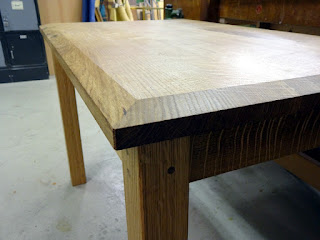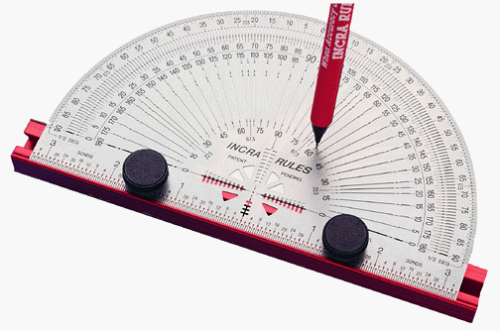More specifically, since I started paring down the number of tools I own and use to do my woodworking, along the lines described in the Anarchist's Tool Chest.
I used to have absolutely no problem in buying a new tool to accomplish a one-time task. Recently I discovered in a box of tools I had rolling around a stethoscope for listening to a running motor, a brand-new impact driver, and a used-only-once motorcycle carburetor synchronizer capable of reading four carburetor's pressures at the same time. You never know when I might need one of those again.
Today I was drilling some 5/16" holes in the leg of my bench to install the roller brackets for my leg vise. Rather than use a brace for this task, I have been using a breast drill that was recently given to me. Beautiful tool and perfect for holes just a little too big for my eggbeater.
This worked perfectly until I got to the holes on the back of the front leg, as the rear leg was now in the way of drilling straight holes with the breast drill, eggbeater, or any of my braces.
In the old days I would have gone out and purchased some attachment for my cordless drill that allows you to drill at a 90 degree angle, such as this one from Amazon for the sale price of $41.75.
 |
| You never know, this might come in handy some day! |
Instead I got out a #5 brace bit, and dropped a t-handle from my tap and die set (also found in the box of old, brand-new tools) over the end of the bit.
Voila! A makeshift gimlet!
This resulted in holes just as perfect as were required.
Christopher Schwarz was right when in the ATC he says his list of tools has everything you need to build furniture. Once I got away from fixating on the gizmos available to woodworkers and focused on a decent set of basic tools, my personal journey got a lot easier.
But, I think I'll still keep that carburetor synchronizer. You never know...









.jpg)










